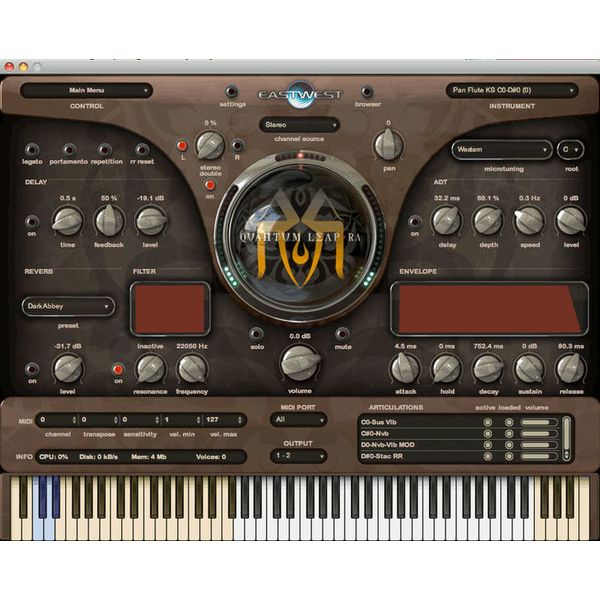
- #EASTWEST QUANTUM LEAP RAM HOW TO#
- #EASTWEST QUANTUM LEAP RAM SERIES#
- #EASTWEST QUANTUM LEAP RAM MAC#
#EASTWEST QUANTUM LEAP RAM MAC#
The 24-bit, 44.1kHz samples run exclusively on EastWest's Play 64-bit audio engine, which works in plug-in and single stand-alone mode on Mac and PC. Quantum Leap Pianos answers all these questions with a heavyweight collection comprising four leading makes of grand piano sampled at up to 18 dynamic levels from a variety of mic positions.
#EASTWEST QUANTUM LEAP RAM HOW TO#
Nowadays sampled pianos sound pretty realistic, but certain problems remain: how to reproduce the effect of the sustain pedal? What microphone positions to use? What brand of piano to sample? Early attempts foundered due to lack of RAM - sampling 88 notes in stereo was well beyond the capabilities of your average 1980s hardware sampler - but in the late '90s the advent of sample disk-streaming and Nemesys's Gigasampler gave sampling a new lease of life. For years, companies have striven to provide a truly playable sampled acoustic grand. Having covered virtually the entire history of amplified music instrumentation with their Beatles homage Fab Four and its heavy friend Ministry Of Rock, sample wizards EastWest/Quantum Leap turn their attention to a more subtle and elusive instrument: the grand piano. Is this 'grand design' the answer to our virtual piano prayers?
#EASTWEST QUANTUM LEAP RAM SERIES#
On the interface itself is a representation of all the articulations available to a particular instrument and what key that switch may be mapped.The latest in the EastWest Play series offers deluxe representations of four classic instruments. Running notes into each other, the engine detects and keeps the initial ?bow? of the first note and slides the other notes in if you so choose and can then change playing style with a simple key switched mapped to the keyboard. Also for bowed instruments we have superb legato detection. This simple idea really opens up the world of MIDI-based guitar at least for me, and will save me a ton of editing time when playing in some guitar lines in the future. Guitars, for instance have a second sampled note when the same note is played again to differentiate between the first and second strum. The PLAY engine really captures how you play and adapts it to that instrument. Typically, playing any of these instruments at default settings is just amazing, you almost don?t want to mess with the settings too much because the presets are great. I don?t want to overuse the term, but ?intuitive? to me is something that works the way you expect it to, and works well. Initially, it?s hard to describe because?well, you?d expect it to be a lot more complicated to evoke the exact performance you want.
About the articulation implementation: Very nice.

They do this by a very intuitive articulation implementation and appropriate parameters to tweak such as reverb types (several real world convolution based settings), ADSR of course, other filters and delays to create exactly the sound you are looking to capture. The 64-bit PLAY engine really brings these recordings to life by not simply reproducing the recording, but truly reproducing the performance. Double that with on-screen key switch highlighting, and it seems like you can never be lost, or want of On the interface itself is a representation of all the articulations available to a particular instrument and what key that switch may be mapped.




 0 kommentar(er)
0 kommentar(er)
